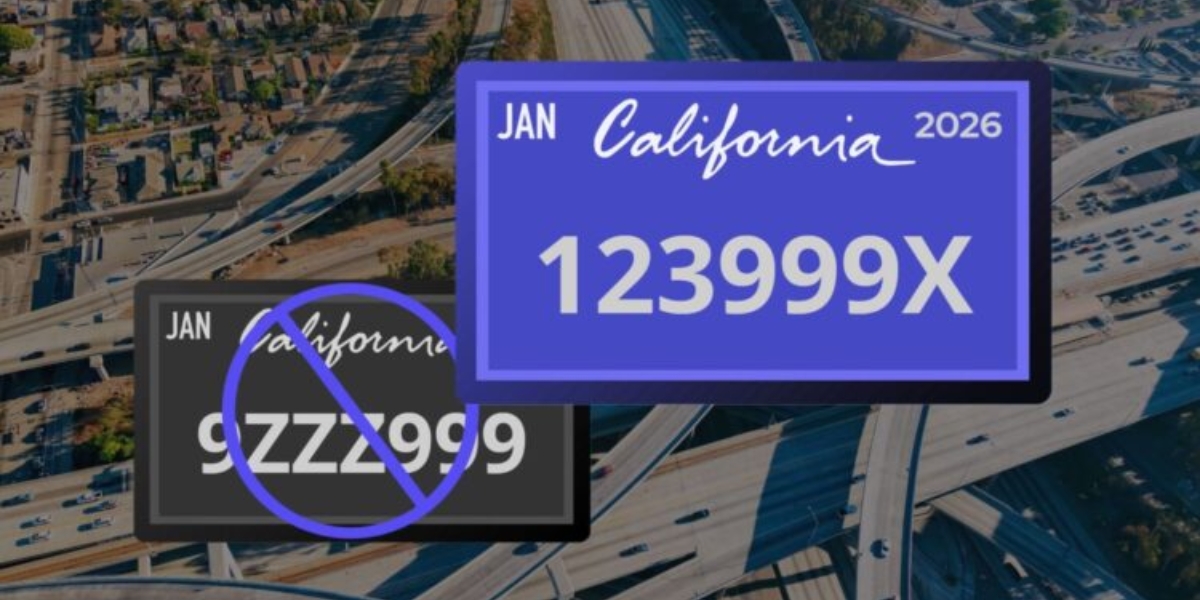For the first time in over four decades, California is set to change the format of its standard vehicle license plates. The state’s Department of Motor Vehicles (DMV) announced that starting in 2026, a new plate design will be introduced to accommodate the growing number of vehicles on the road.
Why Is California Changing Its License Plates?
California has been using the same license plate sequence since 1980—a combination that begins with one number, followed by three letters, and ends with three numbers (for example, 1ABC234). This system has served the state for 45 years but is now reaching its limit.
The DMV explains that the current format will soon run out of possible combinations due to a surge in new vehicle registrations. Experts suggest this surge may be tied to economic factors like trade policy uncertainties and rising car prices, which have pushed many Californians to purchase new cars in recent months.
What Will the New License Plate Look Like?
Starting next year, California will introduce a fresh design to expand the number of available plate combinations. The new format will flip the current structure, featuring three numbers, then three letters, and ending with a single number (for example, 123ABC4).
This change is designed to keep things simple and recognizable for drivers and law enforcement alike while providing enough unique combinations to last for years to come.
How Will This Affect Drivers?
While the new license plates will be different, California drivers won’t need to worry about replacing their current plates immediately. The DMV assures residents that existing plates will remain valid, and the transition to the new format will be smooth.
This update is primarily a behind-the-scenes fix to help the state manage the increasing number of vehicles without causing confusion on the roads.
The Curious Case of the Final Old-Format Plate
One interesting detail remains unanswered: Who will receive the last license plate under the current format, ending with 9ZZZ999? DMV officials say the decision on who gets this final plate hasn’t been made yet.
Similarly, the first plate issued under the new format—starting with 000AAA1—is expected to be a special moment, much like the last plate of the old system.
What’s Behind the Spike in New Car Registrations?
California saw a notable jump in new car registrations in early 2025. Some analysts link this trend to concerns about the impact of trade tensions and tariffs implemented in recent years, which led many to buy vehicles before prices potentially climbed higher.
This surge pushed the DMV to act quickly in updating the license plate system to keep up with the state’s booming vehicle market.
What Should Californians Know?
- The new license plate format will roll out starting in 2026.
- Current plates will stay valid, and no immediate action is required from vehicle owners.
- The DMV is preparing to make the transition as seamless as possible.
For more details, residents can visit the California DMV website.
Looking Ahead
While this change may cause some initial adjustment, it’s a necessary step to accommodate California’s growing number of vehicles. It’s also a reminder of how quickly things evolve in the state that is home to nearly 40 million people and millions of cars.
So next time you spot a new license plate on the road, know that it’s part of California’s response to growth and change — keeping drivers moving forward, one plate at a time.
“This article was written by Mathew Owen. AI tools were used lightly for grammar and formatting, but the ideas, words, and edits are all mine.”


 by
by 

